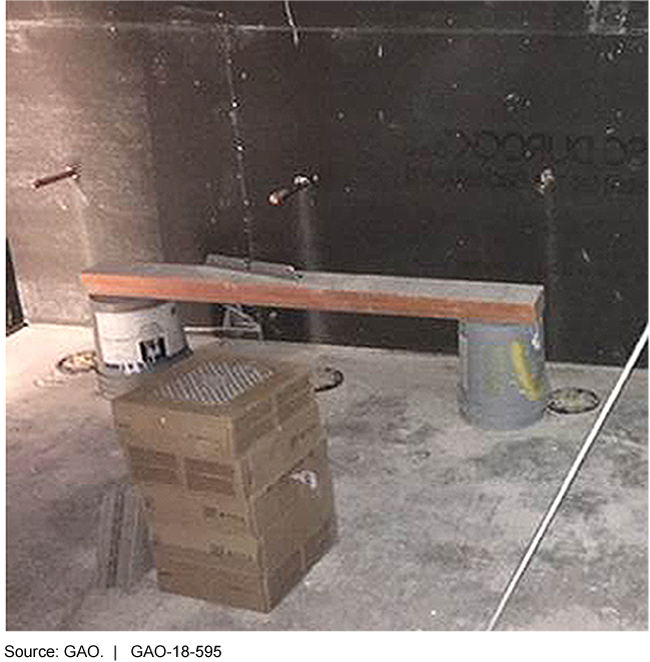Real Property: GSA Is Taking Steps to Improve Collection and Reporting of Repair and Alteration Projects' Information
Fast Facts
The General Services Administration (GSA) spends millions yearly to maintain approximately 1,600 federally owned buildings. Without repair and alteration projects, building safety may decline and operating costs may increase.
GSA collects information from its regional offices to monitor progress and assess the performance of building projects. Timely and complete information used to create reports is essential for GSA to have an understanding of regional and national performance. Some regional offices said that GSA’s reports don't meet their needs to manage the projects.
GSA is introducing new dashboard reports to help address this issue.
A renovation of restroom facilities at Fritz G. Lanham Federal Building in Fort Worth, Texas

This photo shows construction underway.
Highlights
What GAO Found
The General Services Administration (GSA) requires its regional offices to collect information on their repair and alteration (R&A) projects electronically and is working to improve the completeness and timeliness of this collection. Since 2011, GSA has required its regional offices to input and update information on both capital projects (those costing more than $3.095 million as of fiscal year 2018) and small projects (those costing less than $3.095 million). Officials from the four regions GAO interviewed said they find this system to be useful for forecasting how a capital project will progress. Regarding small projects' information, GSA has taken steps to improve regional offices' collection by, for example, conducting monthly checks to ensure that all small projects have been created in the system, assessing the number of projects that have missing information, and introducing a simplified way that GSA's regions can enter information in the system. GSA officials reported that, moving forward, they are continuing to emphasize the importance of collecting complete and timely information, which is needed to assess the performance of all R&A projects.
Examples of Repair and Alteration Projects Under Way in a GSA Region

GSA uses schedule- and budget-focused measures to assess the individual, the regional, and the national performance of capital and small R&A projects and is working to create a consistent understanding of performance. GSA's measures rely on information input by regional officials. For example, during the construction phase, GSA uses two “project delivery” measures, which compare a project's estimated schedule and budget with actual outcomes. GSA produces regional and national reports detailing projects' performance relative to these measures. However, not all regional officials GAO spoke with view these reports as useful because they are not specific to the officials' information needs. As a result, some regions have created their own reports, contributing to an inconsistent understanding of R&A projects' performance across the agency. GSA has conducted outreach to its regions and has begun to introduce new “dashboard” reports that present a consolidated view of R&A projects' information. Moving forward, GSA's ability to assess R&A projects' performance will continue to rely on regional officials' complete and timely input of information for both capital and small projects.
Why GAO Did This Study
Each year, GSA spends hundreds of millions of dollars on R&A projects to address the repair, renovation, or modernization needs of the more than 1,600 federally owned buildings under the agency's custody and control—the average building's age is 47 years old. In fiscal year 2018, Congress appropriated $666 million in obligational authority from the Federal Buildings Fund for GSA's R&A program. Collecting information is fundamental to monitoring progress and assessing projects' performance.
GAO was asked to review issues about GSA's collection of information needed to manage its R&A projects. This report examines how GSA (1) collects information on individual R&A projects and (2) assesses the performance of R&A projects.
GAO reviewed documentation on the systems that GSA uses to support its management of the R&A program, as well as internal GSA reports on regional offices' use of the system that tracks projects' status. GAO also interviewed officials from GSA's central office and four regional offices to understand the types of information collected on R&A projects and how the information is input in GSA's systems. To identify the regional officials to be interviewed, GAO selected a non-generalizable sample of four capital R&A projects and eight small R&A projects, active between October 2013 and August 2017, based on a preliminary analysis of GSA data.
GSA had no comments on the report.
For more information, contact Lori Rectanus at (202) 512-2834 or rectanusl@gao.gov.
